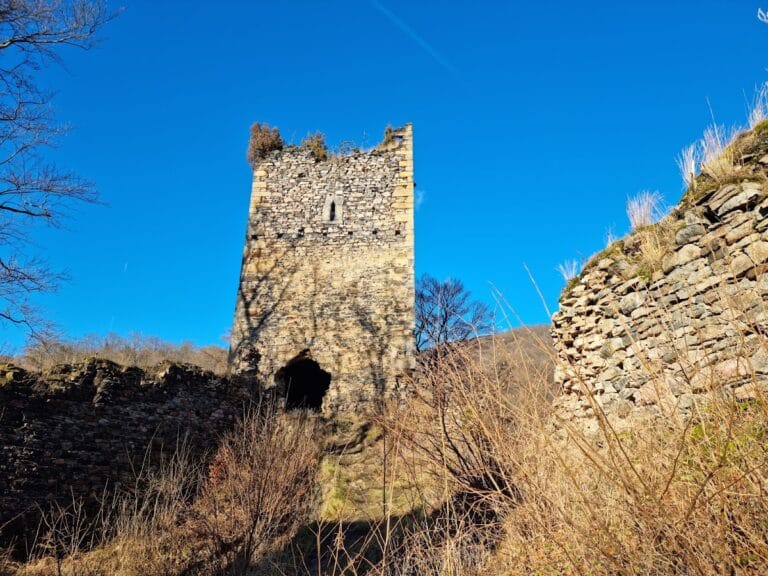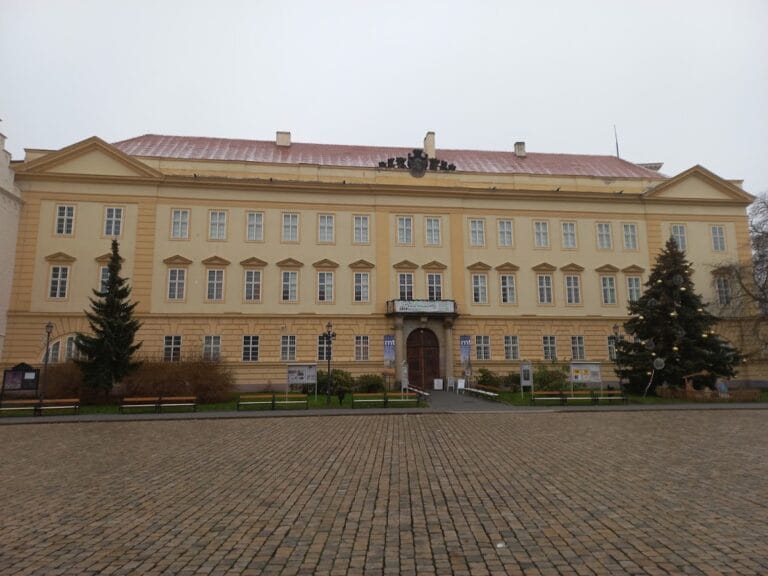Jezeří Castle: A Historic Czech Fortress and Chateau
Visitor Information
Google Rating: 4.5
Popularity: Medium
Google Maps: View on Google Maps
Official Website: www.zamek-jezeri.cz
Country: Czechia
Civilization: Medieval European
Remains: Military
History
Jezeří Castle is situated in the municipality of Jezeří in the modern Czech Republic. It originated as a Gothic fortress erected in the mid-14th century by a noble family known as Pány ze Rvenic, also referred to as de Lacu or de Aysemberg. The earliest recorded owner, Nevlas de Lacu, is documented in 1365, shortly after the castle’s initial construction between 1363 and 1365.
Throughout the late medieval period, ownership of the castle passed through several noble houses, including the Smolík ze Slavic and Kunz von Kauffungen. Kunz von Kauffungen became historically notable for his involvement in the 1450 abduction of Saxon princes, a significant event in regional politics. In 1459, King George of Poděbrady seized the castle for its strategic importance amid shifting power struggles in the area.
The early 16th century marked a turning point when Sigmund Smolík died without heirs in 1513. The castle then passed to his brother-in-law Nikolaus Hochhauser, who undertook a transformation of the medieval fortress into a Renaissance-style chateau in 1549, reflecting the architectural trends of the period.
In the early 17th century, the castle’s fate entwined with the political upheavals of the Bohemian Revolt. Nikolaus Hochhauser’s participation led to the confiscation of the estate in 1623 by the ruling authorities. Soon after, Wilhelm Popel von Lobkowicz received the property, initiating a Baroque remodeling in 1627. The castle endured two major fires—in 1646 during the Thirty Years’ War and again in 1713—and was rebuilt in the Baroque fashion after each disaster.
Following 1722, the Lobkowicz family mainly used Jezeří as a hunting retreat. Their ownership extended over numerous surrounding towns and villages, enriching their estates with agricultural lands, forests, breweries, lime kilns, brickyards, and lignite (brown coal) mines, highlighting the area’s economic diversity.
The late 18th and early 19th centuries represented a cultural zenith under the Lobkowicz princes. The castle hosted a theater established in 1802, a hunting music band, and a choir. This era attracted prominent figures such as Johann Wolfgang von Goethe, Ludwig van Beethoven, Joseph Haydn, Christoph Willibald Gluck, and the Wranitzky brothers. Notably, Beethoven’s Symphony No. 3, commonly called the “Eroica,” and Haydn’s oratorio “The Creation” had their private premieres within the castle’s walls.
During the Second World War, Nazi forces seized Jezeří Castle, particularly as its owner, Max Lobkowicz, was in exile. The castle functioned as a special internment camp for high-ranking officers from the Allied nations and French hostages. Additionally, it operated as a satellite labor camp associated with the Flossenbürg concentration camp.
After the establishment of communist rule in 1948, the estate was nationalized. The castle was repurposed for military use, during which its interior suffered significant destruction and neglect. In the 1980s, plans to expand the nearby ČSA open-pit lignite mine threatened the castle and surrounding settlements. However, geological studies revealed that the castle is founded on a stable crystalline rock formation, separate from the adjacent coal basin, allowing for protective measures and preservation efforts to commence.
The estate was restituted to the Lobkowicz family in 1991. Due to the high costs associated with restoration, the family donated the castle to the Czech state in 1996. Since then, it has been under the care of the National Heritage Institute. In recognition of its fragile condition, Jezeří Castle was listed in 2020 by Europa Nostra as the first Czech monument among Europe’s most endangered heritage sites.
Remains
Jezeří Castle stands upon a rocky outcrop and exhibits a complex layout reflecting its layered history. The present structure incorporates remnants of the original medieval fortress, particularly visible in the basement and western wings of the chateau. The eastern wings extend beyond the boundaries of the initial castle construction, indicating later expansions during the Renaissance and Baroque periods.
The defensive components of the original castle survive only in fragments. Archaeological studies have identified the position of a single moat, which would have provided protection against attackers. Additionally, semicircular and southwestern terraces remain where artillery bastions may have once stood, suggesting adaptations to evolving military technologies in the castle’s fortifications.
The existing Baroque chateau is composed of four wings arranged in an H-shaped floor plan. These wings enclose three sides of a courtyard, creating a sheltered, inward-facing layout. A prominent feature is the southern risalit—a projecting section with a large domed hall supported by heavy consoles. This grand interior space housed the early 19th-century castle theater, a central cultural venue during the Lobkowicz family’s patronage.
The castle’s main western façade showcases a subtle risalit culminating in a square tower situated above the main entrance portal. Flanking this portal are two atlantes sculptures—figures serving as architectural supports—attributed, though without definite confirmation, to the artist Johann Adam Dietz. From this entrance, visitors access the courtyard, which also offers observation terraces on both the east and west sides of the building.
Inside, the castle contains a variety of richly decorated rooms. These include vaulted chambers adorned with stucco mirrors and a polygonal great hall, reflecting the Baroque style’s emphasis on grandeur and light. There are also a gilded cabinet, audience and mirror halls, a banquet room, the princely chamber, the castle library, and the theater space previously mentioned.
Surrounding the castle, remnants of the original 50-hectare English landscape park, created in the 1820s on the slope below, survive today mainly as the Eisenberg Arboretum. This protected area preserves ancient oak, linden, and beech trees, relics of the historic parkland once integral to the estate’s appearance.
Within the park lie the remains of a family mausoleum constructed after 1753, probably designed by Andreas Altomonte, a notable artist of the period. The castle chapel, built in 1805 and dedicated to Our Lady of Sorrows, also stands within the grounds, further highlighting the estate’s religious and commemorative functions.
Geologically, the castle is situated on the southeastern slope of the Erzgebirge mountains (known locally as Krušné hory). The bedrock beneath consists mainly of orthogneiss, a type of crystalline rock formed deep within the Earth during ancient mountain-building events called the Variscan orogeny. Tectonic faults around the area separate this crystalline block under the castle from the neighboring coal basin, a detail of significance for both the structure’s stability and later mining activities near the site.










